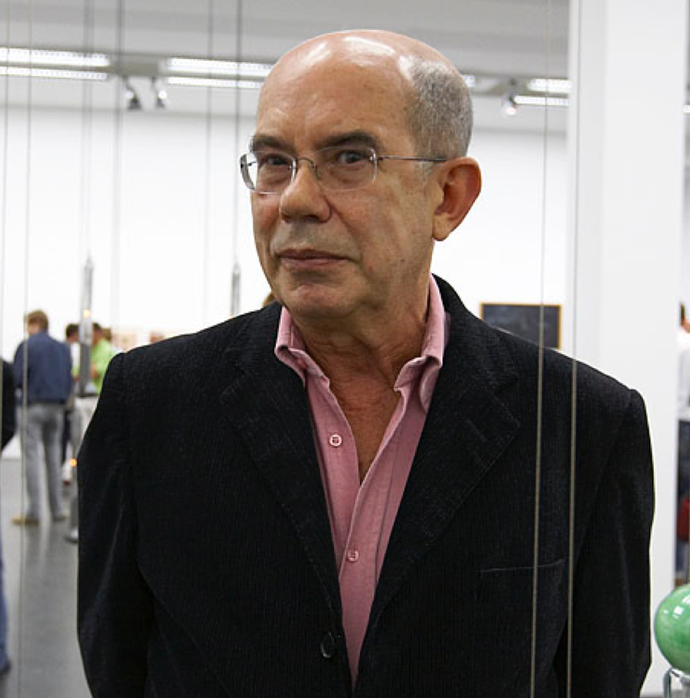
Antonio Dias
Antonio Dias was a celebrated Brazilian artist and graphic designer.
Biography of Antonio Dias
Antonio Dias was born in 1944 in Campina Grande, Brazil. In 1957, he relocated to Rio de Janeiro, where he started his career as a graphic designer while exploring art during his free time.
In the 1960s, Dias became a regular visitor to the studio of artist Oswaldo Goeldi at the Escola Nacional de Belas Artes. Initially focusing on abstract geometrical sculptures, he later transitioned to working with paper and canvas.
His pieces were characterized by political critique through paintings, drawings, and assemblages emblematic of Brazilian Pop Art and Neo Figurativism, in which he played a key role. Dias' artistic approach is influenced by the legacy of the Neo-concrete movement and an early recognition of the revolutionary essence of Tropicalia.
In 1966, while in self-exile in Paris following subtle criticism from the Brazilian military dictators, Antonio Dias encountered members of the Italian avant-garde movement Arte Povera, including Luciano Fabro and Giulio Paolini.
After being denied an extension of his French papers in May 1968, he relocated to Milan, Italy. There, he embraced a conceptual approach to painting, filmmaking, audio recordings, and artist books, challenging the very essence of art itself. His playful and subversive exploration of eroticism, sex, and political oppression culminated in a distinctive artistic output, characterized by formal elegance intertwined with political themes and a sharp critique of the art system.
In the late 1970s, Dias journeyed to Nepal to master the craft of producing a unique artisanal paper, a skill he would employ until the following decade.
During the 1980s, his artistic focus shifted back to painting, as he delved into experimenting with metallic and mineral pigments like gold, copper, iron oxide, and graphite, blending them with various binding agents. Many of the artworks created during this period exhibit a metallic gleam and incorporate a diverse array of symbols—including bones, crosses, rectangles, and phalluses—reflecting a thematic continuity with the artist's earlier works.
Despite Dias consistently rejecting any affiliation with the American Pop art movement, critics and curators frequently draw parallels between his work and the movement.
The artist died in 2018 in Milan, leaving behind a rich and influential artistic legacy that continues to inspire and provoke contemplation.
Years:
Born in 1944
Country:
Brazil, Campina Grande, State of Paraíba